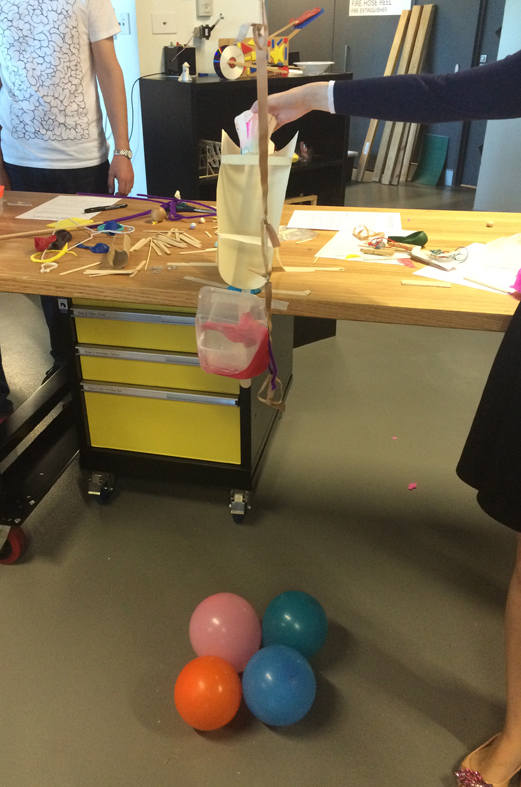
Canberra put on beautiful weather for our last full day at the NSTSS. After our morning ritual of visiting the on-campus coffee shop, we met the group at the Science Teaching Seminar Building for an engaging talk on ‘Flipped Classrooms’. While all three of us were familiar with the term, we were unaware of how frequently it is used in higher education and how successful the strategy can be. Joe Hope who is a Physics lecturer at ANU explained how he video records his ‘lectures’ for students to watch at home, followed by a weekly 3 hour workshop for students to apply their new skills and ask questions. Joe was an engaging speaker and all of the teachers were excited about learning how to implement a ‘flipped classroom’ in their school.
We briskly waked to the ANU Research School of Earth Sciences for a workshop on seismology led by Dr Michelle Salmon. Dr Salmon gave us a brief tour of the school’s website, which had a variety of great resources for teaching Earth Sciences. She then pointed out where all of the seismometers were in schools across the country and the corresponding data that had been collected from each. One of the research fellows from the school ran an experiment that visually displayed how mountains can be formed from plate tectonic movement. We then also got a feel of other related experiments that can be set up in the classroom with the use of a few basic materials.

 Our next stop was the Questacon Technology Learning Centre at Deakin. This was unanimously one of our favourite sessions for the week where we got to participate in a range of activities including a ‘bungee egg challenge’. This task required the teachers to work in groups of four, using the materials provided to design the most effective way to launch a raw egg off the surface of a desk and bungee back up without breaking. There was only one egg fatality. The activity was simple yet very effective, and can be manipulated and implemented in the classroom in a variety of ways corresponding to the subject area and year level.
Our next stop was the Questacon Technology Learning Centre at Deakin. This was unanimously one of our favourite sessions for the week where we got to participate in a range of activities including a ‘bungee egg challenge’. This task required the teachers to work in groups of four, using the materials provided to design the most effective way to launch a raw egg off the surface of a desk and bungee back up without breaking. There was only one egg fatality. The activity was simple yet very effective, and can be manipulated and implemented in the classroom in a variety of ways corresponding to the subject area and year level.

After an eggcellent time at Deakin Questacon, we ‘rocked up’ to Geosciences Australia. Here we were fortunate enough to collect a variety of resources from their Education Centre, which will be of great use when we set foot in the classroom. We also went on a tour through the building to the tsunami watch centre and SHRIMP (Sensitive High Resolution Ion Microbe Probe) research lab. We thank the helpful and knowledgable staff for their time and energy.
It was fair to say that we were all feeling pretty tired by this point in the day – luckily a visit to the Questacon museum was next on the agenda! Each gallery was full of interesting sculptures, hands-on experiments and very friendly and informative staff. We were even lucky enough to have the entire place to ourselves so we definitely made the most of our time there. An adrenalin-fuelled highlight was the free fall vertical slide – this sure was an effective way to wake us all up when our energy levels were falling.
Day 5 wrapped up with a fantastic dinner with even better company at The Tradies club. We are very thankful for the generosity of the team to put this delicious dinner on for us. It was bittersweet having our last main meal together – the week has certainly been fun, insightful and motivating.
We are so lucky to have met the amazing group of teachers that have travelled from across the country for the National Science Teachers Summer School. The knowledge and advice we have gained from conversations with the teachers has been invaluable. We would like to thank Vic, Geoff, Kimberly, Shannon, Robyn and the rest of the team from ASTA for their commitment to making this a wonderful experience; they have gone above and beyond our expectations. We would also like to extend our thanks to Julia and Kathryn and the team from StepUp in Brisbane – we are so appreciative for the experience.
We look forward to catching up with everyone from NSTSS.
Gabby, Gemma and Mel.
